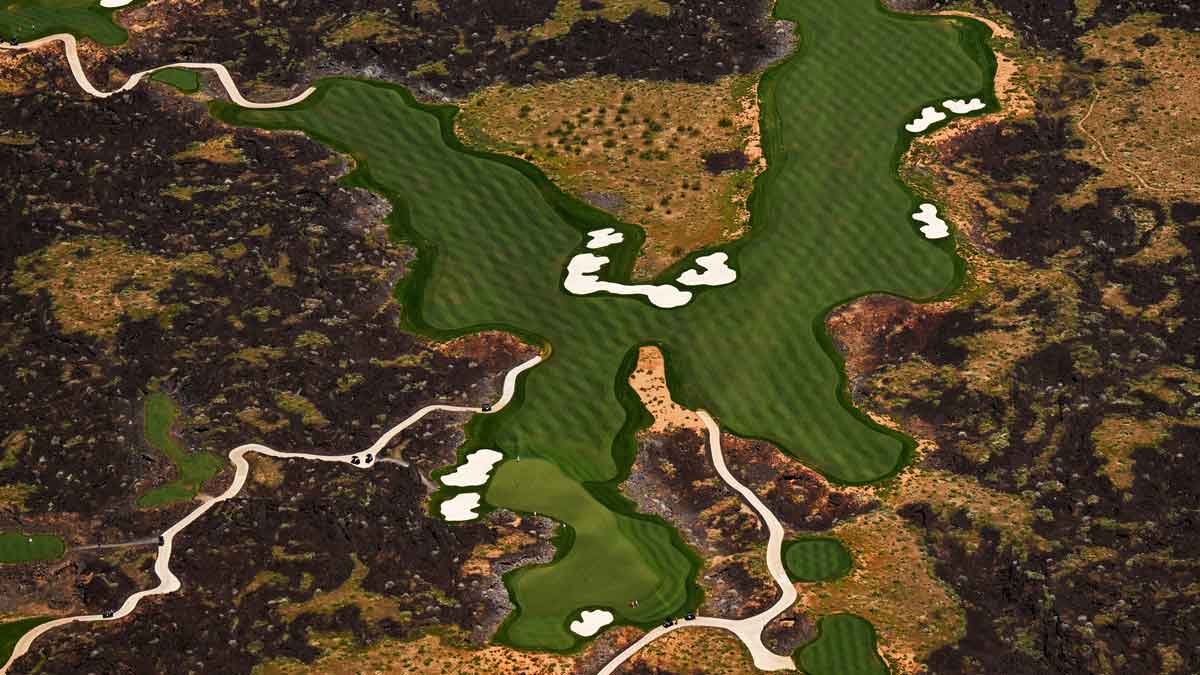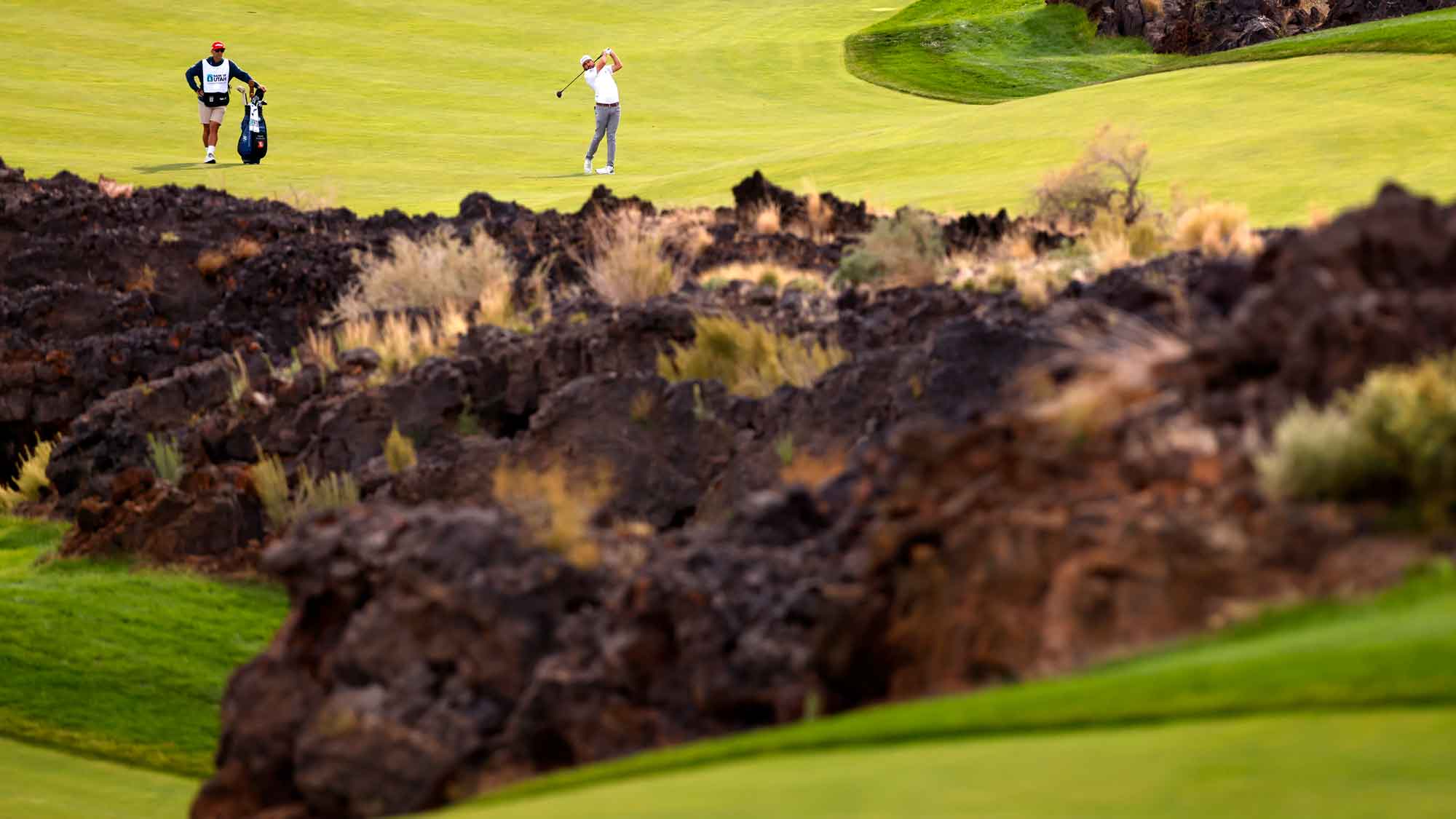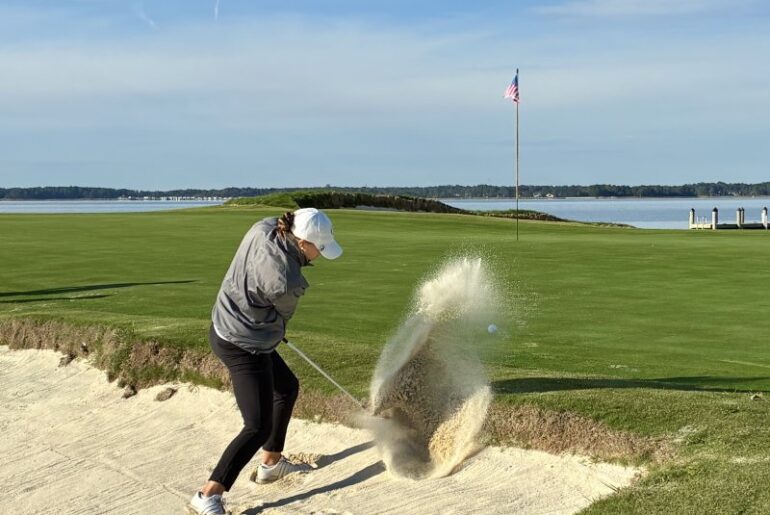The not-even 7,000-yard course at Delhi Golf Club in India held its own last week against the likes of Tommy Fleetwood, Rory McIlroy and several other bold-faced names. When the dust had settled at the DP World India Championship, Fleetwood prevailed with a 72-hole score of 22 under, but McIlroy could manage only 11 under, U.S. Ryder Cupper Ben Griffin finished at nine under and 54 of the players who missed the cut failed to break par. Delhi GC’s primary defense: trees, which pinched every landing zone and made many pros think twice about hitting not only driver but also any other class of lumber.
Now, a week later and half a world from New Delhi, a different kind of threat is in the heads of many of the world’s best players: lava.
More specifically, black lava rock, as in the hardened magma that frames the holes at Black Desert Golf Course in Ivins, Utah, the straight-outta-Golden Tee site of this week’s PGA Tour event, the Bank of Utah Championship. The lava is visually arresting and contrasts beautifully against the verdant fairways, but the players are still doing everything in their power to ensure they admire the volcanic overflow only from afar.
“One bad swing is a re-tee immediately,” Jesper Svensson said Thursday after a six-birdie six-under 65 that featured not a single bad swing — or at least none that had him re-teeing.
Svensson, who is Swedish, snatched a share of the early clubhouse lead with another Scandinavian, Thorbjorn Oleson of Denmark, who after his own opening 65 likewise did not mince his words when identifying Black Desert’s particular challenge. “If you get off the fairway, you’re in big trouble,” Oleson said. “It does take some discipline.”
To be clear, the late Tom Weiskopf, who designed the course with his partner, Phil Smith, wasn’t a masochist; the fairways are generous so there is room to miss. It’s really bad misses that players need to avoid: big blocks, pull hooks and other loose swings of that nature.
Taylor Montogomery learned that the hard way Thursday when he pushed his first swing of the day into the lava right of the 1st fairway. Reload. Double-bogey. Ditto Will Gordon at the opener, only the best he could do was a triple. Lanto Griffin, on his second hole of the day — the par-4 11th — missed the fairway right. Re-tee. Triple.

The fairways at Black Desert are generous. What lines them is not.
getty images
The ball-gobbling rockscape would have come as no surprise to those players in the field who played this event a year ago when Black Desert, which opened in 2022, made its PGA Tour hosting debut. Among that crop was Utah native Zac Blair, who said earlier this week: “Once you get off of the fairway, it’s virtually lost ball in a lot of scenarios. I think last year I saw the stat of the most penalty shots or most whatever it was.”
Black Desert did not, in fact, produce the most penalties among the Tour’s 2024 host sites. That distinction went to TPC Twin Cities, home of the 3M Open, which produced a whopping 344 penalties, according to data the PGA Tour provided GOLF.com. Next on the list was PGA National (Champion Course), which doled out 279 penalties at the 2024 Cognizant Classic, followed by the Players Championship site, the Stadium Course at TPC Sawgrass, where the field absorbed 253 penalties. Fourth on the list, at 236: yep, Black Desert.
But here’s the thing: at the three courses ahead of Black Desert, players must contend with a wealth of water hazards, especially at TPC Twin Cities, which has 27 bodies of water that touch 15 holes. PGA National and TPC Sawgrass also are water-strewn. At Black Desert, water comes into play on only three holes, meaning most of those penalties come by way not of drownings but disappearances into the craggy magma.
Alex Noren shot a tidy four-under 67 Thursday, but he’s still quite aware of the havoc Black Desert can wreak. Earlier in the week he described the course’s primary defense as “probably the most penal rough you’ve ever seen.”
The first round of the Bank of Utah Championship was suspended due to darkness. Play will resume Friday at 8 a.m. local time.







